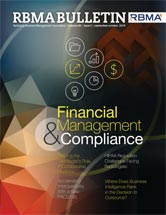It was only a matter of time before the once mostly-free
social media marketing platforms Facebook, Twitter,
and LinkedIn began charging users to more-effectively
reach their audiences. As I see it, Facebook has been
leading the changes in how and when organic brand
content is being displayed across the social sphere; and so, for
the purpose of this article I am going to focus on the changes
Facebook has made and how to get the most impact from your
social media budget.
In a recent article on MarketingWeek.com,1 based on a Facebook
blog post,2 the reasons for Facebook’s changes to its algorithm
within that last year (changes that have caused the organic
reach of a brand’s page content to sharply decline to 3 percent or
less), is explained. Organic reach “has fallen due to more content
being shared on the platform, resulting in more competition for
ranking in the News Feed, and Facebook’s efforts to surface
more ‘high quality content’ and clean up spam on the platform.”
It could be argued that Facebook made these changes to make
more money—and make money, they do! But Facebook says this
is not the case, and goes on to explain that if the News Feed
were to show every piece of content shared, allowing users to
decide what they want to see, the organic reach of brand content
would decrease even further. Instead, Facebook says, “its platform
should be treated like TV, search, newspapers, radio and ‘virtually
every other marketing platform’ and that brands should use paid
media to achieve their business objectives.”
So, how can you effectively and creatively use social media to
make an impact in your marketing successes without throwing a
large amount of money at the effort? Fortunately, there are still
opportunities to reach your target audiences through truly organic
means, and I still believe that Facebook offers extremely well targeted
and cost-effective options when choosing to purchase
social advertising.
To improve your organic reach, try these seven strategies from
The Daily Positive: 3
- Add Photos. Posts with photos get 39 percent more interaction.
- Be Concise. Posts around 80 characters in length get 66
percent more engagement. - Use Emoticons. Posts with emoticons get 33 percent more
comments and shares. - Post on Thursday and Friday. These days show 18 percent
higher engagement rates. - Post Questions. Engaging your audience with questions
generates 100 percent more comments than those without. - Run Contests. Thirty-five percent of fans like a page for the
chance to win something. - Offer a Coupon or Discount. Forty-two percent of fans like a
page with special offers.
When you’re ready to spend some money on your social engagement,
there are a few options to choose from, and strategies that
will help improve your success. When you want to increase the
engagement of your social content (this is content you’ve posted to
your page), there are two primary ways to do this: boosted posts and
promoted posts. The basic differences are in the level of targeting
available and the bidding and budgeting options. Boosted posts
are a quick way to show your posted content to either “fans or their
friends” or “people you choose through targeting.” The fans and
friends option can expose your content to a potentially untapped
audience, but may also go to people not in your geographic area
or with any interest in your content. Targeting allows you to select
people who will see your ad based on location, age, gender, and
their interests. Both options allow you to select how much you want
to spend and over how many days to spread the budget.
The other option, promoted posts, gives you greater flexibility
in targeting, pricing, and your desired objective. With a promoted post, desirable options include increased page post engagement, increased page likes, and increased ability
to drive traffic to your website. You’ll notice your options
for targeting increase from within the Ads Manager, which
can help you ensure the right people see your content, and
as with boosted posts, you will be able to watch how your
ad performs and run detailed reports.
To have the best chance at overall success, try split
testing your ads—also known as A/B testing, when you run
two or more similar ads to test which one performs the best,
add conversion tracking to your website with a snippet of
code provided by Facebook, and monitor Facebook Insights
and Google Analytics for tracking engagement.
References
1. “Facebook Seeks to Put the Record Straight on Organic Reach” | MarketingWeek.
com | June 6, 2014 | http://m.marketingweek.co.uk/4010718.article
2. “Organic Reach on Facebook: Your Questions Answered” | Facebook for Business
| June 5, 2014 | https://www.facebook.com/business/news/Organic-Reachon-
Facebook-UK
3. “7 Strategies That Will BOOM Your Facebook Engagement” | The Daily Positive
| May 22, 2014 | http://dalepartridge.com/7-strategies-will-boom-facebookengagement/
Download the PDF and read the rest now!
